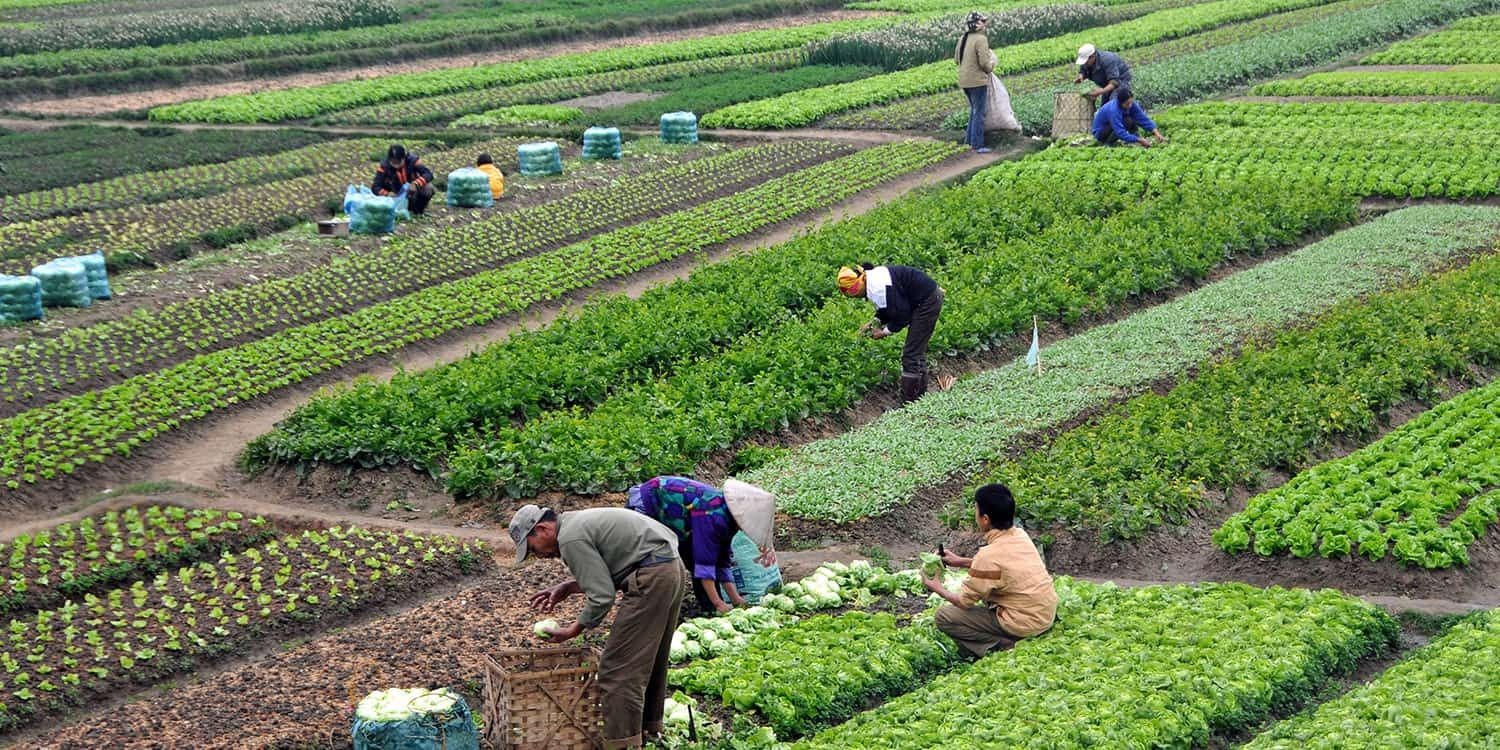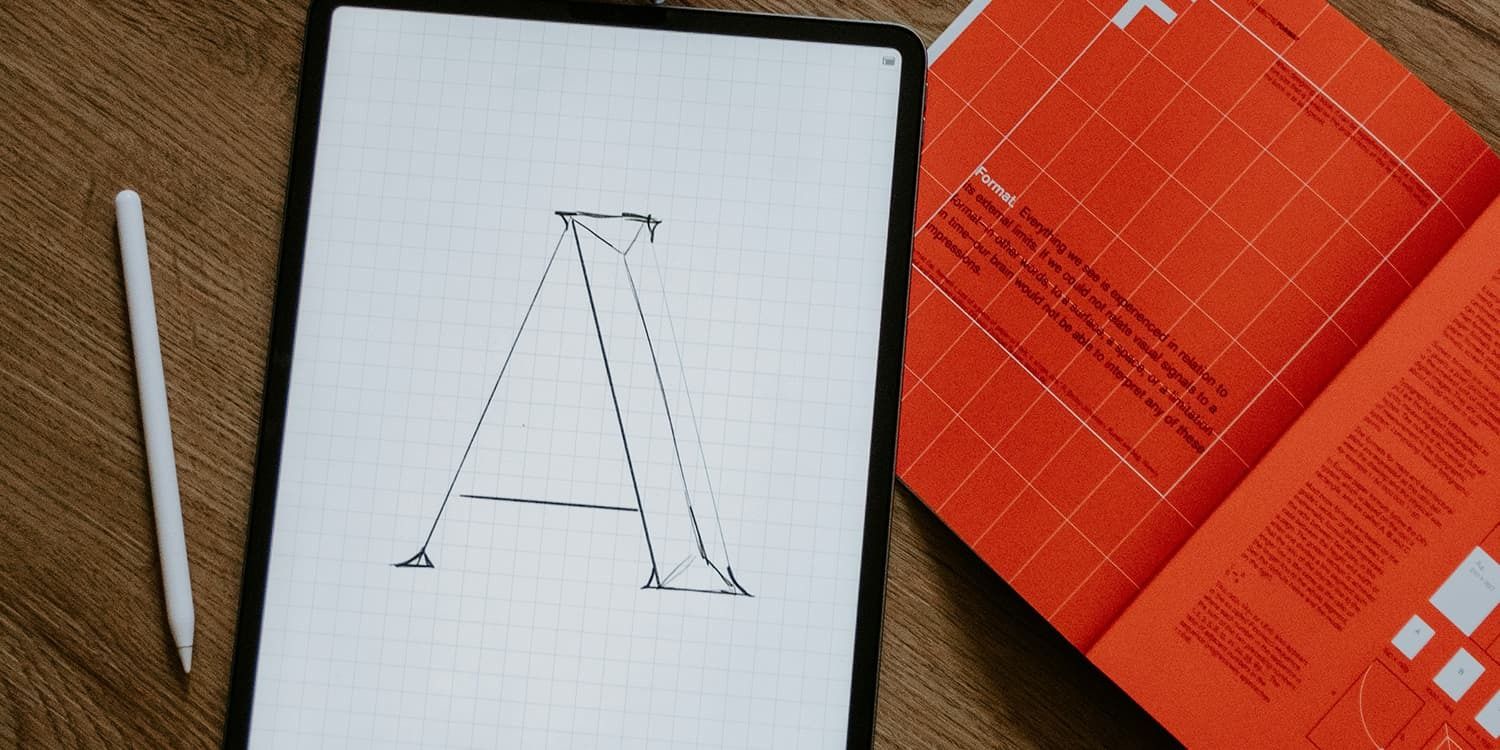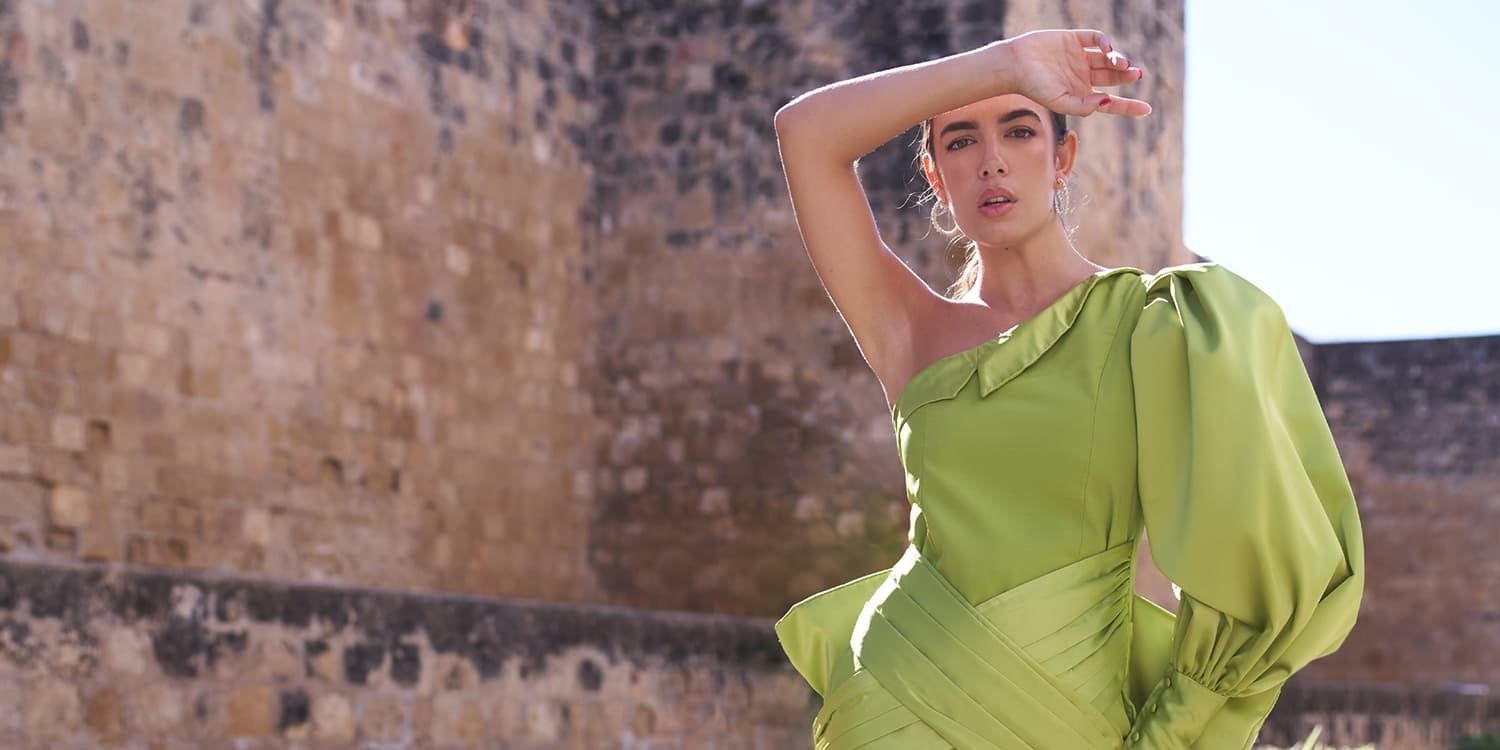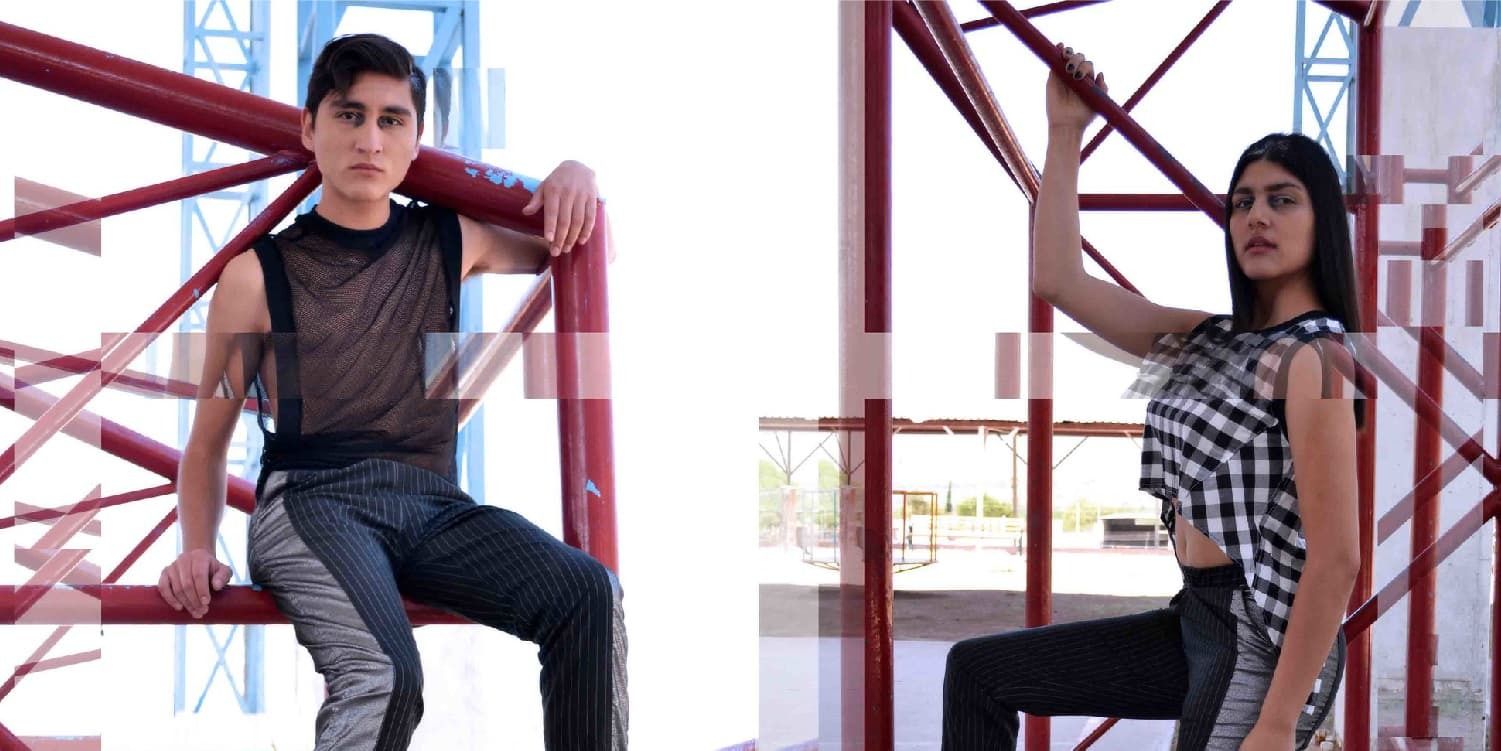- Subtítulo: Strategic Opportunities and Challenges for SMEs
- Autor: Victor Vilar San José
- Abstract:
La inteligencia artificial (IA) está transformando el mundo y, de forma directa, la industria del hábitat. Este trabajo analiza ese impacto desde una perspectiva empresarial con un doble propósito: (i) interpretar las oportunidades y riesgos emergentes —productividad, estructura de costes y perfiles profesionales— y (ii) traducirlos en una hoja de ruta implantable en micro y pequeñas empresas (PYME) del sector.
El trabajo propone una guía práctica para la integración de herramientas de inteligencia artificial (IA) en los flujos de trabajo de micro y pequeñas empresas del ámbito del diseño del hábitat. A través de un enfoque mixto, que combina el análisis cualitativo de las estructuras organizativas y la evaluación cuantitativa de los impactos económicos, la investigación examina una pyme representativa con un equipo de 10 profesionales e identifica las principales etapas del flujo de trabajo —gestión, ideación, desarrollo en curso, presentación y desarrollo de producto—, proponiendo herramientas de IA específicas como Microsoft Copilot, Power BI y Rhino con Grasshopper para mejorar la eficiencia. Se plantea una hoja de ruta de implantación progresiva basada en herramientas ya integradas en ecosistemas existentes (Microsoft Copilot, Power Platform, Rhinoceros, V-Ray y Adobe Substance 3D), lo que facilita una adopción gradual sin alterar los flujos de trabajo consolidados.
La integración de la IA permite automatizar tareas repetitivas, mejorar la precisión técnica y acelerar la generación de propuestas visuales y documentación, aportando beneficios tangibles en productividad, reducción de tiempos, capacidad de respuesta y rentabilidad. Finalmente, se sugieren indicadores clave de rendimiento (KPI), como el tiempo medio de desarrollo visual, la ratio de revisiones de cliente y el índice de entregas puntuales, para medir de manera objetiva el impacto de estas herramientas en el contexto real de una pyme creativa.
- Número revista: 4 - 2025
- citation_title: Artificial Intelligence in the Habitat Industry
- citation_publication_date: 2025/12/18
- citation_online_date: 2025/12/18
- citation_pdf_url: /investigacion/concept/concept_4_aiithi.pdf
- citation_journal_title: Concept
- citation_volume: 1
- citation_issue: 4
- citation_issn: 2952-1440
- citation_dissertation_institution: ESADA - Escuela Superior de Arte y Diseño de Andalucía
- citation_technical_report_institution: ESADA - Escuela Superior de Arte y Diseño de Andalucía
- citation_keywords: AI in habitat-industry SMEs; AI workflow integration in design studios; Automation in furniture/interior design; Productivity KPIs in design practice; Parametric design (Rhino/Grasshopper); PBR rendering for furniture; Copilot and Power BI in creative SMEs; Change management for AI adoption
- citation_abstract_html_url: https://www.esada.es/concept/42-investigacion/954-artificial-intelligence-in-the-habitat-industry
concept
- Subtítulo: Analysis of the use of artificial intelligence in the photography of fashion brand websites. Case study: 2024-2025
- Autor: Marielle Perri Molina
- Abstract:
La integración de la Inteligencia Artificial (IA) en este campo ha revolucionado los procesos creativos y productivos, permitiendo la generación de imágenes digitales, la edición avanzada y la optimización de campañas publicitarias sin necesidad de procesos físicos tradicionales. El objetivo principal de este estudio es analizar cómo la IA ha optimizado la creación visual en moda, mejorando la eficiencia de los procesos y reduciendo costes, sin comprometer la creatividad ni la identidad de marca. Además, explora el uso de tecnologías emergentes como las Redes Generativas Antagónicas (GAN), DALL-E y MidJourney, que han permitido la creación de imágenes hiperrealistas, así como la aparición de modelos digitales y entornos virtuales para desfiles de moda y campañas publicitarias. Se utilizó un análisis cualitativo que examinó diferentes segmentos del mercado: moda de lujo, moda rápida y moda sostenible. También se analizó el uso de la IA en la optimización de la cadena de suministro, la predicción de tendencias y la personalización de la experiencia de usuario. Los resultados muestran que las marcas comprometidas con la sostenibilidad y la innovación digital son las que más integran la inteligencia artificial en sus procesos visuales. Esto se refleja en la adopción de avatares digitales, probadores virtuales y la reducción del impacto ambiental mediante la minimización de la producción física. Las conclusiones destacan que la IA ya se ha consolidado como una herramienta virtual que facilita los procesos creativos en la moda. A pesar de los desafíos éticos y creativos que plantea, su uso continúa creciendo, impulsando un modelo de moda más tecnológico y sostenible que transforma radicalmente el sector y plantea un futuro donde lo digital y lo físico se fusionan.
- Número revista: 4 - 2025
- citation_title: Design and new technologies
- citation_publication_date: 2025/12/18
- citation_online_date: 2025/12/18
- citation_pdf_url: /investigacion/concept/concept_4_dant.pdf
- citation_journal_title: Concept
- citation_volume: 1
- citation_issue: 4
- citation_issn: 2952-1440
- citation_dissertation_institution: ESADA - Escuela Superior de Arte y Diseño de Andalucía
- citation_technical_report_institution: ESADA - Escuela Superior de Arte y Diseño de Andalucía
- citation_keywords: Artificial intelligence, fashion photography, digital fashion, sustainability, digital models, virtual fashion shows, Generative Adversarial Networks (GANs)
- citation_abstract_html_url: https://www.esada.es/concept/42-investigacion/955-design-and-new-technologies
- Subtítulo: Analysis of Holy Week Posters. Case Studies: Spanish Capitals, 2024
- Autor: Clara Martínez Martínez
- Abstract:
El objetivo principal de este estudio es analizar el diseño gráfico de los carteles de Semana Santa de todas las provincias españolas en 2024, así como examinar cómo se representan visualmente los valores religiosos, identitarios y culturales de cada región. Para ello, se llevó a cabo una investigación mediante análisis de contenido y un enfoque cuantitativo, implementado a través de una ficha de observación diseñada y aplicada a un corpus de 52 carteles. Los criterios de selección de la muestra fueron el año 2024, por ser el más reciente, y la inclusión de carteles de todas las capitales de provincia de España. Los resultados muestran una fuerte presencia de elementos tradicionales, con predominio de figuras religiosas centrales, composiciones simétricas y paletas de colores oscuros y solemnes. Sin embargo, también se detecta una progresiva introducción de recursos contemporáneos, especialmente en el tratamiento tipográfico y la simplificación iconográfica. Se observan diferencias notables entre las comunidades autónomas: Andalucía y Castilla y León muestran la mayor tendencia hacia el realismo pictórico, mientras que otras regiones experimentan con estilos más gráficos o minimalistas.
- Número revista: 4 - 2025
- citation_title: Graphic Design and Religion
- citation_publication_date: 2025/12/18
- citation_online_date: 2025/12/18
- citation_pdf_url: /investigacion/concept/concept_4_gdar.pdf
- citation_journal_title: Concept
- citation_volume: 1
- citation_issue: 4
- citation_issn: 2952-1440
- citation_dissertation_institution: ESADA - Escuela Superior de Arte y Diseño de Andalucía
- citation_technical_report_institution: ESADA - Escuela Superior de Arte y Diseño de Andalucía
- citation_keywords: poster; graphic design; visual analysis; Holy Week; cultural identities; tradition
- citation_abstract_html_url: https://www.esada.es/concept/42-investigacion/957-graphic-design-and-religion
- Subtítulo: Lingerie-inspired collection about the impact of daddy issues on the perception of romance. Miss protagonist
- Autor: Claudia Marichal
- Abstract:
El objetivo del presente trabajo es crear una colección de moda de temática romántica que utilice técnicas de patronaje y confección propias de la lencería. Este proyecto nace de la curiosidad por el impacto de los trastornos psicológicos definidos como las daddy issues en la percepción romántica del amor y las relaciones en el cine de los 90 y los 2000. Se han tomado como referentes estéticos las ocho películas más taquilleras de estas dos décadas según la web Filmafinity que además nos sirven para hacer un estudio de la imagen del amor y la naturaleza psicológica de las relaciones entre los personajes. La información obtenida nos sirve de base para crear una colección de moda que a su vez aplica las técnicas tradicionales de confección de lencería al diseño de ropa outerwear. El resultado son 17 looks que constan de piezas lenceras además de gabardinas, americanas y distintas siluetas de vestidos entre otros.
- Número revista: 3 - 2024
- DOI: 10.58534/LRgXslzNH9
- citation_title: The Impact of the European Union on Graphic Design
- citation_publication_date: 2025/02/03
- citation_online_date: 2025/02/03
- citation_pdf_url: /investigacion/concept/concept_3_fdyc.pdf
- citation_journal_title: Concept
- citation_volume: 1
- citation_issue: 3
- citation_issn: 2952-1440
- citation_dissertation_institution: ESADA - Escuela Superior de Arte y Diseño de Andalucía
- citation_technical_report_institution: ESADA - Escuela Superior de Arte y Diseño de Andalucía
- citation_technical_report_number: 10.58534/LRgXslzNH9
- citation_keywords: fashion design, aesthetics, romantic films, cinema, lingerie, pattern-making, psychology, daddy issues
- citation_abstract_html_url: https://www.esada.es/concept/42-investigacion/898-fashion-design-cinema
- Subtítulo: Lingerie-inspired collection about the impact of daddy issues on the perception of romance. Miss protagonist
- Autor: Claudia Marichal
- Abstract:
This dissertation aims to create a romantic-themed fashion collection that uses pattern-making and tailoring techniques characteristic of lingerie. This project is born out of curiosity about the impact of psychological disorders defined as daddy issues in the romantic perception of love and relationships in the cinema of the 90s and 2000s. We have taken as aesthetic references the eight highest-grossing films of these two decades according to the website Filmaffinity, which serves us as a study of the image of love and the psychological nature of the relationships between the characters. The information obtained is the foundation for the creation of a fashion collection that applies traditional lingerie techniques to the design of outerwear. The result is a 17-look collection consisting of lingerie pieces, trench coats, blazers, and different dress silhouettes among others.
- Número revista: 3 - 2024
- DOI: 10.58534/LRgXslzNH9
- citation_title: The Impact of the European Union on Graphic Design
- citation_publication_date: 2025/02/03
- citation_online_date: 2025/02/03
- citation_pdf_url: /investigacion/concept/concept_3_fdyc.pdf
- citation_journal_title: Concept
- citation_volume: 1
- citation_issue: 3
- citation_issn: 2952-1440
- citation_dissertation_institution: ESADA - Escuela Superior de Arte y Diseño de Andalucía
- citation_technical_report_institution: ESADA - Escuela Superior de Arte y Diseño de Andalucía
- citation_technical_report_number: 10.58534/LRgXslzNH9
- citation_keywords: fashion design, aesthetics, romantic films, cinema, lingerie, pattern-making, psychology, daddy issues
- citation_abstract_html_url: https://www.esada.es/en/concept/45-research/908-fashion-design-cinema-eng
- Subtítulo: Supporting agriculture in developing countries through an adaptable digital assistant: Demeter
- Autor: Lucía Sanz Torres
- Abstract:
Este trabajo tiene como objetivo diseñar un asistente digital adaptable que apoye el desarrollo sostenible de la agricultura en los países en vías de desarrollo, especialmente de los productores del medio rural. Se trata de un proyecto que recoge toda la investigación y análisis de la situación actual de los agricultores en dichos países, del prototipado y diseño de un asistente digital y de la elaboración de una imagen adecuada para este proyecto ficticio.
Este proyecto pretende defender el diseño gráfico como una herramienta eficaz dentro de los planes de acción de la Organización de las Naciones Unidas (ONU) buscando impulsar sus Objetivos de Desarrollo Sostenible (ODS).
En la primera parte del trabajo se define el proyecto, sus objetivos y se contextualiza el tema, aquí se justifica la necesidad real de un proyecto de estas características y el papel del diseño gráfico en él. Después pasamos a la fase de desarrollo del diseño gráfico aplicado a un asistente digital: desde los primeros bocetos a la interfaz final.
La evolución del trabajo corresponde con las conclusiones gráficas extraídas de la investigación y su respectiva aplicación cromática, tipográfica y conceptual, con la elaboración de un prototipo de asistente virtual, el desarrollo de una identidad corporativa y la presentación de los resultados finales.
- Número revista: 3 - 2024
- DOI: 10.58534/aaSFJinCgI
- citation_title: Graphic design and sustainable development
- citation_publication_date: 2025/02/03
- citation_online_date: 2025/02/03
- citation_pdf_url: /investigacion/concept/concept_3_gdasd.pdf
- citation_journal_title: Concept
- citation_volume: 1
- citation_issue: 3
- citation_issn: 2952-1440
- citation_dissertation_institution: ESADA - Escuela Superior de Arte y Diseño de Andalucía
- citation_technical_report_institution: ESADA - Escuela Superior de Arte y Diseño de Andalucía
- citation_technical_report_number: 10.58534/aaSFJinCgI
- citation_keywords: graphic design, sustainable development, adaptable digital assistant, agricultural support, developing countries, digital innovation in agriculture; human-centered design
- citation_abstract_html_url: https://www.esada.es/concept/42-investigacion/897-graphic-design-and-sustainable-development
- Subtítulo: Supporting agriculture in developing countries through an adaptable digital assistant: Demeter
- Autor: Lucía Sanz Torres
- Abstract:
This work aims to design a digital assistant that supports the sustainable development of agriculture in developing countries, especially focused on rural producers. This is a project that includes all the research and analysis of the current situation of farmers in these countries, the prototyping and design of a digital assistant and the development of an appropriate image for this fictitious project.
This project aims to defend graphic design as an effective tool within the action plans of the United Nations (UN) seeking to promote its Sustainable Development Goals (SDGs).
In the first part of the work the project, its objectives and the topic are contextualized. Here we justify the real need for a project of these characteristics and the role of graphic design in it. Then we move on to the development phase of graphic design applied to a digital assistant: from the first sketches to the final interface.
The evolution of this work corresponds to the graphic conclusions drawn from the research and its respective chromatic, typographic and conceptual application. Also, with the development of a virtual assistant prototype, the development of a corporate identity and the presentation of the final results.
- Número revista: 3 - 2024
- DOI: 10.58534/aaSFJinCgI
- citation_title: Graphic design and sustainable development
- citation_publication_date: 2025/02/03
- citation_online_date: 2025/02/03
- citation_pdf_url: /investigacion/concept/concept_3_gdasd.pdf
- citation_journal_title: Concept
- citation_volume: 1
- citation_issue: 3
- citation_issn: 2952-1440
- citation_dissertation_institution: ESADA - Escuela Superior de Arte y Diseño de Andalucía
- citation_technical_report_institution: ESADA - Escuela Superior de Arte y Diseño de Andalucía
- citation_technical_report_number: 10.58534/aaSFJinCgI
- citation_keywords: graphic design, sustainable development, adaptable digital assistant, agricultural support, developing countries, digital innovation in agriculture; human-centered design
- citation_abstract_html_url: https://www.esada.es/en/concept/45-research/907-graphic-design-and-sustainable-development-eng
- Subtítulo: An Analysis of Its Brand Presence in the Imagotypes of Private Educational Institutions in Madrid (2023)
- Autor: María Dolores Gutiérrez Guerrero
- Abstract:
Este estudio investiga la presencia del concepto Europa en la denominación de empresas españolas, examinando cómo en los imagotipos aparece representada la palabra Europa o sus derivados y los elementos gráficos que la acompañan. La metodología usada responde al conocido como análisis de contenido al que se le ha aplicado un enfoque cuantitativo. El corpus que compone la muestra investigada contiene dieciocho elementos que son las imágenes de marca de centros de enseñanza privada de Madrid en el año 2023 según la web del Ministerio de Educación y Formación Profesional, educacion.gob.es. El resultado es la identificación de unos patrones comunes en el diseño de las imágenes de marca a través de los imagotipos que evocan la idea de Europa, esto confirma el vínculo entre España y Europa a nivel cultural y también empresarial.
- Número revista: 3 - 2024
- DOI: 10.58534/3eG54v9EVZ
- citation_title: The Impact of the European Union on Graphic Design
- citation_publication_date: 2025/02/03
- citation_online_date: 2025/02/03
- citation_pdf_url: /investigacion/concept/concept_3_tioteuogd.pdf
- citation_journal_title: Concept
- citation_volume: 1
- citation_issue: 3
- citation_issn: 2952-1440
- citation_dissertation_institution: ESADA - Escuela Superior de Arte y Diseño de Andalucía
- citation_technical_report_institution: ESADA - Escuela Superior de Arte y Diseño de Andalucía
- citation_technical_report_number: 10.58534/3eG54v9EVZ
- citation_keywords: advertising, brand image, imagotype, naming, Europe, graphic design
- citation_abstract_html_url: https://www.esada.es/concept/42-investigacion/896-the-impact-of-the-european-union-on-graphic-design
- Subtítulo: An Analysis of Its Brand Presence in the Imagotypes of Private Educational Institutions in Madrid (2023)
- Autor: María Dolores Gutiérrez Guerrero
- Abstract:
This study investigates the presence of the concept of Europe in the naming of Spanish companies, examining how the word “Europe” and its derivatives are represented in imagotypes, along with the accompanying graphic elements. The methodology employed is known as content analysis, applied with a quantitative approach. The research corpus sample consists of eighteen elements, which are the brand images of private educational institutions in Madrid for the year 2023, according to the website of the Ministry of Education and Vocational Training (educacion.gob.es). The results show recurring patterns in the design of brand images through the imagotypes that evoke the idea of Europe, confirming the cultural and business link between Spain and Europe.
- Número revista: 3 - 2024
- DOI: 10.58534/3eG54v9EVZ
- citation_title: The Impact of the European Union on Graphic Design
- citation_publication_date: 2025/02/03
- citation_online_date: 2025/02/03
- citation_pdf_url: /investigacion/concept/concept_3_tioteuogd.pdf
- citation_journal_title: Concept
- citation_volume: 1
- citation_issue: 3
- citation_issn: 2952-1440
- citation_dissertation_institution: ESADA - Escuela Superior de Arte y Diseño de Andalucía
- citation_technical_report_institution: ESADA - Escuela Superior de Arte y Diseño de Andalucía
- citation_technical_report_number: 10.58534/3eG54v9EVZ
- citation_keywords: advertising, brand image, imagotype, naming, Europe, graphic design
- citation_abstract_html_url: https://www.esada.es/en/concept/45-research/906-the-impact-of-the-european-union-on-graphic-design-eng
- Subtítulo: Results from a Research Workshop at L’École de Design Nantes Atlantique
- Autor: Julien Delannoy y José Antonio González Casares
- Abstract:
Este artículo presenta los hallazgos de un taller de investigación llevado a cabo en L’École de Design Nantes Atlantique, centrado en explorar las posibilidades que la biomímesis ofrece al diseño. El objetivo del taller fue investigar cómo los organismos naturales pueden inspirar enfoques innovadores en el diseño de productos y sistemas.
Para lograrlo, se empleó una metodología de investigación práctica basada en una mesa de biomímesis, una colección curada de organismos seleccionados por su potencial para inspirar soluciones de diseño. Se alentó a los participantes a estudiar las estructuras, funciones y comportamientos de estos organismos, traduciendo estos conocimientos en resultados conceptuales y prácticos aplicables al diseño. La naturaleza interdisciplinaria del taller se enriqueció aún más con la colaboración de un biólogo, quien proporcionó orientación científica y garantizó la precisión biológica en los análisis realizados por los participantes.
Esta investigación no solo exploró la aplicación de la biomímesis en los procesos de diseño, sino que también demostró el valor de integrar la experiencia biológica dentro de las prácticas creativas. Los resultados del taller subrayan el potencial de la biomímesis como una herramienta para la innovación sostenible, fomentando una comprensión más profunda del papel de la naturaleza en la resolución de desafíos complejos en el diseño.
El proyecto fue llevado a cabo por tres equipos de estudiantes internacionales, cuyo objetivo principal fue seleccionar un área en la Île de Nantes, donde se encuentra la escuela, y diseñar un espacio para los residentes de la isla utilizando principios de diseño biomimético. El proyecto estuvo dirigido por un equipo de profesores: José Antonio González Casares, de ESADA, y Julien Delannoy, de L’École de Design.
Queremos expresar nuestro más profundo agradecimiento a L’École de Design Nantes Atlantique y a su excepcional equipo de Erasmus, liderado por Zoe Lacey, por la increíble experiencia y el gran esfuerzo realizado para hacer de la International Week un éxito notable. Asimismo, extendemos nuestro sincero agradecimiento al equipo Erasmus de ESADA y a su coordinador, Félix Guerrero, por su entusiasmo y dedicación en la preparación del proyecto. Finalmente, un agradecimiento especial al equipo de Biomimicry Granada (https://biomimicrygranada.com/), en particular a Abraham Ortega y Theresa Millard, por la preparación de los materiales y el apoyo científico esencial que garantizó que el taller fuera tanto productivo como inspirador.
- Número revista: 3 - 2024
- DOI: 10.58534/Q70wiTVi8J
- citation_title: Investigating Biomimicry in Design
- citation_publication_date: 2025/02/03
- citation_online_date: 2025/02/03
- citation_pdf_url: /investigacion/concept/concept_3_ibid.pdf
- citation_journal_title: Concept
- citation_volume: 1
- citation_issue: 3
- citation_issn: 2952-1440
- citation_dissertation_institution: ESADA - Escuela Superior de Arte y Diseño de Andalucía
- citation_technical_report_institution: ESADA - Escuela Superior de Arte y Diseño de Andalucía
- citation_technical_report_number: 10.58534/Q70wiTVi8J
- citation_keywords: sustainable, biomimicry design, Nantes island, research in design
- citation_abstract_html_url: https://www.esada.es/concept/42-investigacion/895-investigating-biomimicry-in-design
- Subtítulo: Results from a Research Workshop at L’École de Design Nantes Atlantique
- Autor: Julien Delannoy y José Antonio González Casares
- Abstract:
This article presents the findings of a research workshop conducted at L’École de Design Nantes Atlantique, focused on exploring the possibilities biomimicry offers in design. The workshop aimed to investigate how natural organisms can inspire innovative approaches to product and systems design.
To achieve this, the workshop employed a hands-on research methodology centred on a biomimicry table—a curated collection of organisms selected for their potential to inspire design solutions. Participants were encouraged to study the organisms’ structures, functions, and behaviours, translating these insights into conceptual and practical design outcomes. The interdisciplinary nature of the workshop was further enriched by the collaboration of a biologist, who provided scientific guidance and ensured the biological accuracy of the participants’ analyses.
This investigation not only explored the application of biomimicry in design processes but also demonstrated the value of integrating biological expertise within creative practices. The workshop outcomes underline the potential of biomimicry as a tool for sustainable innovation, fostering a deeper understanding of nature’s role in addressing complex design challenges.
The project was undertaken by three teams of international students, with the primary objective of selecting an area on the Île de Nantes, where the school is located, and designing a space for the island’s residents using biomimetic design principles. The project was led by a team of professors: José Antonio González Casares from ESADA and Julien Delannoy from L’École de Design.
We would like to extend our deepest gratitude to L’École de Design Nantes Atlantique and its outstanding Erasmus team, led by Zoe Lacey, for the incredible experience and their immense effort in making the International Week such a remarkable success. Additionally, our sincere thanks go to the Erasmus team at ESADA and their coordinator, Félix Guerrero, for their enthusiasm and dedication in preparing the project. Finally, a special thanks to the team at Biomimicry Granada (https://biomimicrygranada.com/), particularly Abraham Ortega and Theresa Millard, for preparing the materials and providing the essential scientific support that ensured the workshop was both productive and inspiring.
- Número revista: 3 - 2024
- DOI: 10.58534/Q70wiTVi8J
- citation_title: Investigating Biomimicry in Design
- citation_publication_date: 2025/02/03
- citation_online_date: 2025/02/03
- citation_pdf_url: /investigacion/concept/concept_3_ibid.pdf
- citation_journal_title: Concept
- citation_volume: 1
- citation_issue: 3
- citation_issn: 2952-1440
- citation_dissertation_institution: ESADA - Escuela Superior de Arte y Diseño de Andalucía
- citation_technical_report_institution: ESADA - Escuela Superior de Arte y Diseño de Andalucía
- citation_technical_report_number: 10.58534/Q70wiTVi8J
- citation_keywords: sustainable, biomimicry design, Nantes island, research in design
- citation_abstract_html_url: https://www.esada.es/en/concept/45-research/905-investigating-biomimicry-in-design-eng
- Subtítulo: New opportunities for emptied Spain in the XXI century
- Autor: María Vileya Espinosa
- Abstract:
Este trabajo examina la cuestión habitacional en la “España Vaciada” y propone una solución basada en la sostenibilidad y el mantenimiento de la identidad arquitectónica, destinada a facilitar proyectos de reforma rural. Los entornos rurales representan una oportunidad para que los jóvenes, que enfrentan dificultades para lograr una buena calidad de vida, se establezcan con ayuda de herramientas contemporáneas. Focalizado en España y sus características homogéneas, el estudio también considera los cambios sociales tras la pandemia del Covid-19.
El trabajo se basa en importantes estudios nacionales, como el de Sergio del Molino, y internacionales, como el de Claudia de Luca, Simona Tondelli y Hanna Elisabeth, que analizan los efectos de la pandemia en las áreas rurales y proyectos de revitalización rural basados en la cultura.
La metodología incluye un estudio documental de áreas temáticas relevantes para jóvenes de 18 a 35 años: nuevas tecnologías para combatir la despoblación, comparativa de los efectos en la salud mental entre entornos urbanos y rurales, estrategias de sostenibilidad para reconquistar el espacio urbano, y la vivienda rural como alternativa de acceso a la vivienda. Estas áreas se analizan para proporcionar información útil sobre las nuevas formas de entender los espacios.
En conclusión, el diseño de espacios es clave para la transición de la vida urbana a la rural, y este trabajo ofrece recomendaciones de interiorismo para adaptar las viviendas a las necesidades contemporáneas.
- Número revista: 3 - 2024
- DOI: 10.58534/WQTWpqzuRB
- citation_title: Interior design strategies for rural spaces
- citation_publication_date: 2025/02/03
- citation_online_date: 2025/02/03
- citation_pdf_url: /investigacion/concept/concept_3_idsfrs.pdf
- citation_journal_title: Concept
- citation_volume: 1
- citation_issue: 3
- citation_issn: 2952-1440
- citation_dissertation_institution: ESADA - Escuela Superior de Arte y Diseño de Andalucía
- citation_technical_report_institution: ESADA - Escuela Superior de Arte y Diseño de Andalucía
- citation_technical_report_number: 10.58534/WQTWpqzuRB
- citation_keywords: emptied Spain, repopulation, new generations, habitability, rural development, displacement
- citation_abstract_html_url: https://www.esada.es/concept/42-investigacion/894-interior-design-strategies-for-rural-spaces
- Subtítulo: New opportunities for emptied Spain in the XXI century
- Autor: María Vileya Espinosa
- Abstract:
This work examines the housing issue in the “Empty Spain” and proposes a solution based on sustainability and the maintenance of architectural identity, aimed at facilitating rural renovation projects. Rural environments represent an opportunity for young people, who face difficulties in achieving a good quality of life, to settle with the help of contemporary tools. Focused on Spain and its homogeneous characteristics, the study also considers the social changes following the Covid-19 pandemic.
The work is based on important national studies, such as Sergio del Molino’s, and international ones, such as Claudia de Luca, Simona Tondelli, and Hanna Elisabeth’s, which analyse the effects of the pandemic on rural areas and rural revitalisation projects based on culture.
The methodology includes a documentary study of thematic areas relevant to young people aged 18 to 35: new technologies to combat depopulation, a comparison of the effects on mental health between urban and rural environments, strategies for reclaiming urban space as a sustainability measure, and rural housing as an alternative for housing access. These areas are analysed to provide useful information on new ways of understanding spaces.
In conclusion, space design is key for the transition from urban to rural living, and this work offers interior design recommendations to adapt homes to contemporary needs.
- Número revista: 3 - 2024
- DOI: 10.58534/WQTWpqzuRB
- citation_title: Interior design strategies for rural spaces
- citation_publication_date: 2025/02/03
- citation_online_date: 2025/02/03
- citation_pdf_url: /investigacion/concept/concept_3_idsfrs.pdf
- citation_journal_title: Concept
- citation_volume: 1
- citation_issue: 3
- citation_issn: 2952-1440
- citation_dissertation_institution: ESADA - Escuela Superior de Arte y Diseño de Andalucía
- citation_technical_report_institution: ESADA - Escuela Superior de Arte y Diseño de Andalucía
- citation_technical_report_number: 10.58534/WQTWpqzuRB
- citation_keywords: emptied Spain, repopulation, new generations, habitability, rural development, displacement
- citation_abstract_html_url: https://www.esada.es/en/concept/45-research/903-tapping-into-natures-bounty-eng
- Subtítulo: Tapping into nature's bounty
- Autor: Paula Mutiloa Martínez
- Abstract:
Este proyecto aborda la necesidad de materiales sostenibles como respuesta a la degradación ambiental causada por la actividad humana, particularmente desde mediados del siglo XX. Los residuos orgánicos, como la Posidonia oceanica, contribuyen significativamente a la contaminación y las emisiones de gases de efecto invernadero. Se destaca el papel del diseñador en la solución de estos desafíos, enfocándose en la reutilización de los desechos de Posidonia oceanica para la creación de nuevos materiales. El estudio investiga la transformación de los residuos orgánicos en compuestos utilizables, analizando la viabilidad de crear materiales sostenibles con propiedades únicas. El objetivo principal es utilizar los desechos de Posidonia oceanica como refuerzo en materiales compuestos. Los objetivos específicos incluyen la experimentación con biocompuestos utilizando micelio, procesos de biococción con gelatina, agar-agar y Posidonia. El proyecto sigue cinco etapas: recopilación y análisis de información, experimentación, pruebas, recopilación de resultados y documentación final. Se empleó una metodología de innovación de materiales, junto con pruebas no estandarizadas, para confirmar la hipótesis de que se podría crear un material compuesto a partir de los desechos de Posidonia oceanica, incluyendo datos sobre sus posibles combinaciones con otros materiales.
- Número revista: 3 - 2024
- DOI: 10.58534/n5TwdtbirW
- citation_title: Exploring posidonia oceanica organic waste for sustainable material development
- citation_publication_date: 2025/02/03
- citation_online_date: 2025/02/03
- citation_pdf_url: /investigacion/concept/concept_3_tinb.pdf
- citation_journal_title: Concept
- citation_volume: 1
- citation_issue: 3
- citation_issn: 2952-1440
- citation_dissertation_institution: ESADA - Escuela Superior de Arte y Diseño de Andalucía
- citation_technical_report_institution: ESADA - Escuela Superior de Arte y Diseño de Andalucía
- citation_technical_report_number: 10.58534/n5TwdtbirW
- citation_keywords: waste generation, organic waste, composite material, posidonia waste, material innovation
- citation_abstract_html_url: https://www.esada.es/concept/42-investigacion/893-tapping-into-natures-bounty
- Subtítulo: Tapping into nature's bounty
- Autor: Paula Mutiloa Martínez
- Abstract:
This project addresses the need for sustainable materials in response to environmental degradation caused by human activity, particularly since the mid-20th century. Organic waste, such as Posidonia oceanica, significantly contributes to pollution and greenhouse gas emissions. The designer’s role in addressing these challenges is highlighted, focusing on repurposing Posidonia oceanica waste into new materials. The study investigates the transformation of organic waste into usable composites, examining the feasibility of creating sustainable materials with unique properties. The primary goal is to use Posidonia oceanica waste as reinforcement in composite materials. Specific objectives include experimenting with biocomposites using mycelium, bio-cooking processes with gelatin, agar-agar, and Posidonia. The project follows five stages: information gathering and analysis, experimentation, testing, results compilation, and final documentation. A material innovation methodology, alongside non-standardised tests, was employed to confirm the hypothesis that a composite material could be made from Posidonia oceanica waste, including data on its potential combinations with other materials.
- Número revista: 3 - 2024
- DOI: 10.58534/n5TwdtbirW
- citation_title: Exploring posidonia oceanica organic waste for sustainable material development
- citation_publication_date: 2025/02/03
- citation_online_date: 2025/02/03
- citation_pdf_url: /investigacion/concept/concept_3_tinb.pdf
- citation_journal_title: Concept
- citation_volume: 1
- citation_issue: 3
- citation_issn: 2952-1440
- citation_dissertation_institution: ESADA - Escuela Superior de Arte y Diseño de Andalucía
- citation_technical_report_institution: ESADA - Escuela Superior de Arte y Diseño de Andalucía
- citation_technical_report_number: 10.58534/n5TwdtbirW
- citation_keywords: waste generation, organic waste, composite material, posidonia waste, material innovation
- citation_abstract_html_url: https://www.esada.es/en/concept/45-research/903-tapping-into-natures-bounty-eng
- Subtítulo: Exploring Surrealist-Inspired Pattern-Making: Innovative Techniques and Sustainable Approaches in Fashion Design
- Autor: Ana Belén Santos–Orejón Peña
- Abstract:
Este proyecto se ha desarrollado a partir de un estudio exhaustivo sobre el patronaje en la moda, centrado en la exploración de formas que evocan al arte surrealista. Este movimiento artístico, conocido por sus representaciones oníricas, sirve como una rica fuente de inspiración para crear prendas innovadoras que desafían las normas establecidas del diseño convencional.
Desde la perspectiva del patronaje, se han explorado diferentes sistemas que abarcan desde los métodos más tradicionales hasta técnicas más vanguardistas. Algunos de los sistemas más conocidos son el sistema Martí o el sistema Isa. Ambos métodos siguen enfoques técnicos que se adaptan de manera general a las tallas estándar establecidas en la industria.En contraste con estos métodos convencionales, se ha trabajado con el patronaje “zero waste” o de “cero residuos”. Este enfoque se basa en el uso de formas geométricas que permiten la creación de prendas versátiles y multiposicionales, todo mientras se evita el desperdicio de tejido. No podemos olvidar el enfoque del patronaje a medida, esta técnica implica una adaptación precisa a la estructura corporal de cada persona, utilizando patrones únicos basados en las medidas exactas del cliente.
El uso del maniquí a escala ha permitido experimentar con diferentes proporciones y ajustes, facilitando la visualización de cómo estas formas, que evocan las características del arte surrealista, pueden interactuar con el cuerpo humano de manera dinámica. Además, en la evaluación y reinterpretación de algunos volúmenes, se han empleado diversas técnicas textiles con el fin de reinterpretar formas ya establecidas. Estas técnicas incluyen el drapeado, el plisado y la manipulación de tejidos.
- Número revista: 3 - 2024
- DOI: 10.58534/aSCuUiSWe7
- citation_title: Study of body shapes and physiognomy
- citation_publication_date: 2025/02/03
- citation_online_date: 2025/02/03
- citation_pdf_url: /investigacion/concept/concept_3_sobsap.pdf
- citation_journal_title: Concept
- citation_volume: 1
- citation_issue: 3
- citation_issn: 2952-1440
- citation_dissertation_institution: ESADA - Escuela Superior de Arte y Diseño de Andalucía
- citation_technical_report_institution: ESADA - Escuela Superior de Arte y Diseño de Andalucía
- citation_technical_report_number: 10.58534/aSCuUiSWe7
- citation_keywords: pattern making, textile techniques, abstract forms, surrealist art
- citation_abstract_html_url: https://www.esada.es/concept/42-investigacion/892-study-of-body-shapes-and-physiognomy
- Subtítulo: Exploring Surrealist-Inspired Pattern-Making: Innovative Techniques and Sustainable Approaches in Fashion Design
- Autor: Ana Belén Santos–Orejón Peña
- Abstract:
This project was developed through an exhaustive study of pattern-making in fashion, focusing on the exploration of forms inspired by surrealist art. This artistic movement, renowned for its dreamlike and unconventional imagery, serves as a rich source of inspiration for creating innovative garments that challenge the traditional norms of design.
From a pattern-making perspective, various systems have been explored, ranging from traditional methods to cutting-edge techniques. Among the most recognised systems are the Martí system and the Isa system, both employing technical approaches generally adapted to the standard sizes set by the fashion industry.
In contrast to these conventional methods, ‘zero waste’ pattern-making has been implemented—an approach that uses geometric shapes to create versatile, multi-positional garments while minimising fabric waste. Made-to-measure pattern-making has also played a key role, involving precise tailoring to each individual’s body structure through bespoke patterns crafted to the client’s exact measurements.
The use of a scale mannequin has facilitated experimentation with different proportions and configurations, enabling the visualisation of how these surrealist-inspired shapes interact dynamically with the human form. Furthermore, various textile techniques have been employed to evaluate and reinterpret established volumes, including draping, pleating, and fabric manipulation, further enhancing the exploration of form and texture.
- Número revista: 3 - 2024
- DOI: 10.58534/aSCuUiSWe7
- citation_title: Study of body shapes and physiognomy
- citation_publication_date: 2025/02/03
- citation_online_date: 2025/02/03
- citation_pdf_url: /investigacion/concept/concept_3_sobsap.pdf
- citation_journal_title: Concept
- citation_volume: 1
- citation_issue: 3
- citation_issn: 2952-1440
- citation_dissertation_institution: ESADA - Escuela Superior de Arte y Diseño de Andalucía
- citation_technical_report_institution: ESADA - Escuela Superior de Arte y Diseño de Andalucía
- citation_technical_report_number: 10.58534/aSCuUiSWe7
- citation_keywords: pattern making, textile techniques, abstract forms, surrealist art
- citation_abstract_html_url: https://www.esada.es/en/concept/45-research/902-study-of-body-shapes-and-physiognomy-eng
- Subtítulo: Poster analysis for manga, anime and Japanese festivals. Cases: Spain 2020 to 2024
- Autor: Carmen González Díaz
- Abstract:
Este proyecto presenta una propuesta de análisis en el campo de la ilustración con el objetivo de estudiar los carteles de las ferias del manga en España, que promocionan la cultura japonesa y venden productos japoneses. Observaremos cómo se adaptan las ilustraciones al público español analizando los carteles de las 40 últimas ferias celebradas en España sobre cultura japonesa y manga. Esto nos permite determinar la presencia de los elementos identificativos de la cultura española, como el uso de banderas o monumentos, entre otros, y afirmar que, a pesar de la globalización, se siguen ensalzando en la publicidad los rasgos característicos de cada región. La metodología aplicada es la denominada análisis de contenido basada en un enfoque cuantitativo.
- Número revista: 3 - 2024
- DOI: 10.58534/6dRqJJsdLX
- citation_title: Illustration and cultural identities
- citation_publication_date: 2025/02/03
- citation_online_date: 2025/02/03
- citation_pdf_url: /investigacion/concept/concept_3_iaci.pdf
- citation_journal_title: Concept
- citation_volume: 1
- citation_issue: 3
- citation_issn: 2952-1440
- citation_dissertation_institution: ESADA - Escuela Superior de Arte y Diseño de Andalucía
- citation_technical_report_institution: ESADA - Escuela Superior de Arte y Diseño de Andalucía
- citation_technical_report_number: 10.58534/6dRqJJsdLX
- citation_keywords: cultural identities, graphic design, content analysis, Illustration, anime, globalisation, posters
- citation_abstract_html_url: https://www.esada.es/concept/42-investigacion/891-illustration-and-cultural-identities
- Subtítulo: Poster analysis for manga, anime and Japanese festivals. Cases: Spain 2020 to 2024
- Autor: Carmen González Díaz
- Abstract:
This project presents an analytical proposal in the field of illustration with the aim of studying the posters of manga fairs in Spain, which promote Japanese culture and sell Japanese products. This study examines how illustrations are adapted for the Spanish audience by analyzing the posters of the 40 most recent fairs held in Spain about Japanese and manga culture. This allows us to determine the presence of the identifying elements of Spanish culture, such as the use of flags or monuments, among others, and to affirm that despite globalisation, the characteristic features of each region continue to be extolled in advertising. The methodology applied is known as content analysis based on a quantitative approach.
- Número revista: 3 - 2024
- DOI: 10.58534/6dRqJJsdLX
- citation_title: Illustration and cultural identities
- citation_publication_date: 2025/02/03
- citation_online_date: 2025/02/03
- citation_pdf_url: /investigacion/concept/concept_3_iaci.pdf
- citation_journal_title: Concept
- citation_volume: 1
- citation_issue: 3
- citation_issn: 2952-1440
- citation_dissertation_institution: ESADA - Escuela Superior de Arte y Diseño de Andalucía
- citation_technical_report_institution: ESADA - Escuela Superior de Arte y Diseño de Andalucía
- citation_technical_report_number: 10.58534/6dRqJJsdLX
- citation_keywords: cultural identities, graphic design, content analysis, Illustration, anime, globalisation, posters
- citation_abstract_html_url: https://www.esada.es/en/concept/45-research/901-illustration-and-cultural-identities-eng
- Subtítulo: Genderless fashion design. Literature Review
- Autor: Raquel María Nofuentes Ramírez
- Abstract:
Esta investigación aborda la intersección entre la moda y la identidad de género, destacando cómo la moda “sin género” o genderless ha evolucionado como una respuesta a las nuevas realidades sociales que exigen inclusión y diversidad, eliminando diferencias. La moda ahora busca trascender las divisiones binarias tradicionales de género, permitiendo que las expresiones de estilo individual prevalezcan sobre las categorías predefinidas de masculino o femenino. El movimiento genderless desafía las normas históricas tradicionales y las expectativas de género, con prendas diseñadas hacia un enfoque más fluido y menos restrictivo que no se adhiere estrictamente a las normas de género binarias.
La investigación se ha llevado a cabo mediante un enfoque multidisciplinario que incluye la revisión de literatura y artículos de diversos autores sobre diferentes teorías de género. Se han analizado trabajos académicos, campañas publicitarias y colecciones de diseñadores influyentes, así como las percepciones y actitudes de diversas generaciones hacia la moda sin género. Además, se han estudiado y comparado campañas publicitarias y tendencias de moda para identificar patrones y cambios en la aceptación de la moda genderless.
Se han alcanzado las siguientes conclusiones: la moda sin género refleja un cambio hacia la aceptación de múltiples identidades de género en la sociedad, impulsado por la demanda de inclusión y diversidad de las nuevas generaciones. Esta moda desafía las normas tradicionales de la industria textil mediante un enfoque inclusivo que permite a las personas expresar su identidad sin estereotipos de género. Sin embargo, la moda sin género enfrenta importantes desafíos en su implementación y aceptación por parte de la sociedad en general.
- Número revista: 3 - 2024
- DOI: 10.58534/VzSyMbUSXz
- citation_title: Genderless fashion design
- citation_publication_date: 2025/02/03
- citation_online_date: 2025/02/03
- citation_pdf_url: /investigacion/concept/concept_3_gfd.pdf
- citation_journal_title: Concept
- citation_volume: 1
- citation_issue: 3
- citation_issn: 2952-1440
- citation_dissertation_institution: ESADA - Escuela Superior de Arte y Diseño de Andalucía
- citation_technical_report_institution: ESADA - Escuela Superior de Arte y Diseño de Andalucía
- citation_technical_report_number: 10.58534/VzSyMbUSXz
- citation_keywords: genderless fashion, gender diversity, fashion trends
- citation_abstract_html_url: https://www.esada.es/concept/42-investigacion/890-genderless-fashion-design-literature-review











